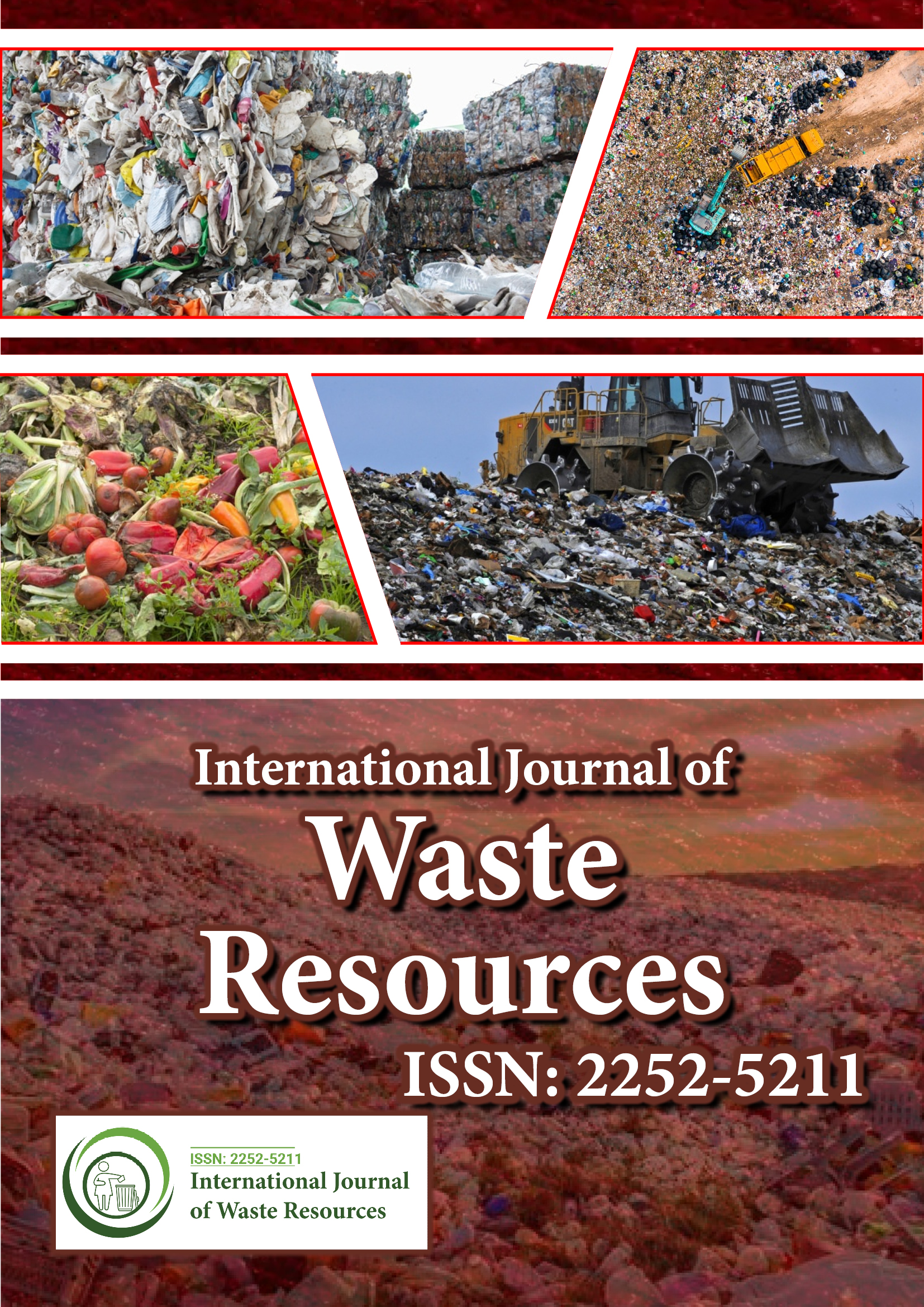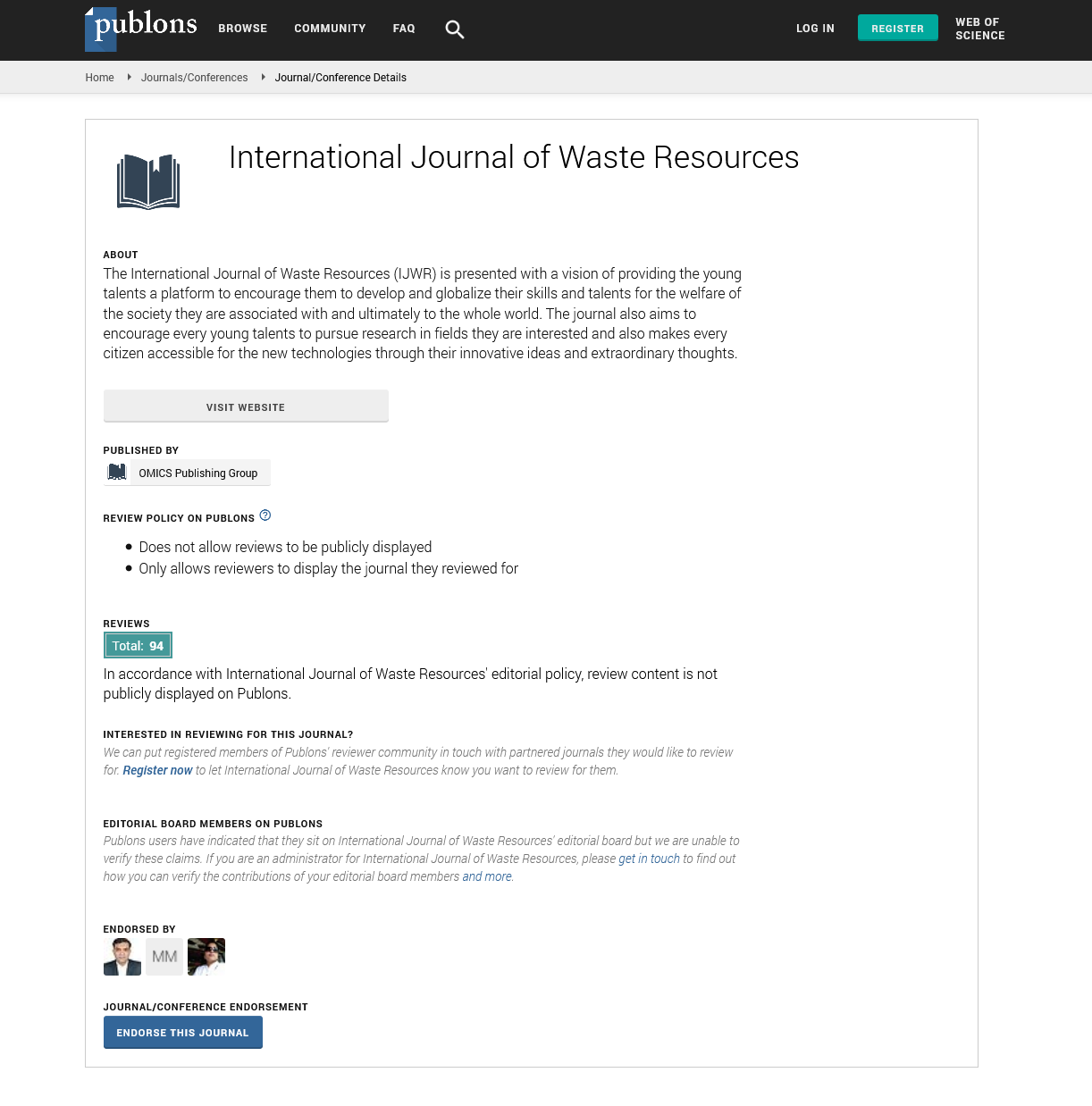PMC/PubMed Indexed Articles
Indexed In
- Open J Gate
- The Global Impact Factor (GIF)
- Open Archive Initiative
- VieSearch
- International Society of Universal Research in Sciences
- China National Knowledge Infrastructure (CNKI)
- CiteFactor
- Scimago
- Ulrich's Periodicals Directory
- Electronic Journals Library
- RefSeek
- Directory of Research Journal Indexing (DRJI)
- Hamdard University
- EBSCO A-Z
- Publons
- Google Scholar
Useful Links
Share This Page
Journal Flyer

Open Access Journals
- Agri and Aquaculture
- Biochemistry
- Bioinformatics & Systems Biology
- Business & Management
- Chemistry
- Clinical Sciences
- Engineering
- Food & Nutrition
- General Science
- Genetics & Molecular Biology
- Immunology & Microbiology
- Medical Sciences
- Neuroscience & Psychology
- Nursing & Health Care
- Pharmaceutical Sciences
Opinion Article - (2024) Volume 14, Issue 3
Role of Biotechnology in Recovering Waste Resources: Emerging Applications and Environmental Impact
Slimane Jiejie*Received: 28-Aug-2024, Manuscript No. IJWR-24-27477; Editor assigned: 30-Aug-2024, Pre QC No. IJWR-24-27477(PQ); Reviewed: 13-Sep-2024, QC No. IJWR-24-27477; Revised: 20-Sep-2024, Manuscript No. IJWR-24-27477(R); Published: 27-Sep-2024, DOI: 10.35248/2252-5211.24.14.591
Description
Biotechnology, the application of biological organisms, systems, and processes, is increasingly recognized for its significant potential in addressing environmental challenges, particularly in the recovery and recycling of waste resources. As the global waste crisis intensifies, traditional waste management techniques are inadequate, a significant threat to our environment. Biotechnology presents an innovative solution by leveraging natural biological processes to recycle, transform, and recover valuable resources from waste. This approach not only mitigates environmental pollution but also contributes to the development of a circular economy where waste becomes a resource rather than a burden. The role of biotechnology in waste resource recovery encompasses various applications, including the bioremediation of pollutants, microbial fuel cells, and the production of biofuels and bioplastics. These emerging applications are reshaping how society approaches waste management by introducing more sustainable and environmentally friendly alternatives to traditional methods. Bioremediation is one of the most widely studied and applied fields within environmental biotechnology. It involves the use of microorganisms, fungi, and plants to degrade or detoxify harmful substances in contaminated environments. For instance, specific bacteria have the ability to break down hydrocarbons, heavy metals, and organic pollutants in soil and water. This biological approach to waste treatment offers several advantages over conventional methods, such as chemical treatment or incineration, which may generate secondary pollutants or require high energy consumption. By using microorganisms, bioremediation provides a low-cost, eco-friendly solution for the treatment of waste materials that would otherwise take years to degrade. For example, the use of bacteria in landfills or wastewater treatment plants can accelerate the breakdown of organic matter, turning waste into valuable byproducts like biogas, which can be used as a renewable energy source. Microbial fuel cells (MFCs) are an emerging biotechnological application that utilize microorganisms to convert organic waste into electrical energy. MFCs utilize the natural metabolism of microbes to break down organic matter, generating electrons in the process. These electrons are then captured to produce electricity. The ability of MFCs to treat wastewater while simultaneously producing energy offers a promising solution for resource recovery and energy generation. The applications of MFCs extend beyond wastewater treatment. They have the potential to be used in various waste management contexts, such as the recovery of valuable materials from industrial or agricultural waste. Moreover, MFCs can be integrated into existing infrastructure, providing a decentralized, sustainable energy solution for regions with limited access to conventional power grids. This is particularly beneficial for waste-to-energy systems in rural or developing areas, where the need for both energy and waste management solutions is critical. The global demand for renewable energy sources has led to increased interest in biofuels as an alternative to fossil fuels. Biotechnology offers a pathway to convert organic waste into biofuels, such as bioethanol, biodiesel and biogas. Through processes like fermentation, anaerobic digestion and transesterification, waste materials such as agricultural residue, food waste and municipal solid waste can be converted into biofuels. This not only helps reduce reliance on non-renewable energy sources but also reduces greenhouse gas emissions associated with traditional waste disposal methods. In addition to biofuels, biotechnology is also playing a essential role in the development of bioplastics, which are produced from renewable biological resources rather than petroleum-based materials. Bioplastics can be made from agricultural waste, food byproducts, or even algae. By shifting from petroleum-based plastics to bioplastics, the environmental impact of plastic waste can be significantly reduced, as bioplastics are biodegradable and can be composted rather than accumulating in landfills or oceans. Enzymes are biological catalysts that can speed up chemical reactions and their application in waste processing has garnered significant attention in recent years. Enzyme-based technologies can be used to break down complex organic materials in waste, making it easier to recover valuable resources like sugars, amino acids and proteins. For instance, enzymes can be used to convert cellulose from agricultural waste into fermentable sugars, which can then be used in biofuel production. The use of enzymes in waste processing also extends to the recycling of plastics, textiles and electronic waste.
Conclusion
Enzyme-based approaches offer a more energy-efficient and selective method for breaking down these materials compared to traditional mechanical or chemical recycling techniques. As enzyme technology continues to advance, it is expected to become a key tool in the development of more sustainable waste management practices. Moreover, biotechnology promotes the concept of a circular economy by enabling the recovery of valuable resources from waste. Instead of treating waste as a nuisance to be discarded, biotechnology encourages the recovery of valuable products such as biofuels, bioplastics and fertilizers, fostering a more sustainable and resource-efficient economy.
Citation: Jiejie S (2024). Role of Biotechnology in Recovering Waste Resources: Emerging Applications and Environmental Impact. Int J Waste Resour. 14:591.
Copyright: © Jiejie S. This is an open-access article distributed under the terms of the Creative Commons Attribution License, which permits unrestricted use, distribution, and reproduction in any medium, provided the original author and source are credited.

